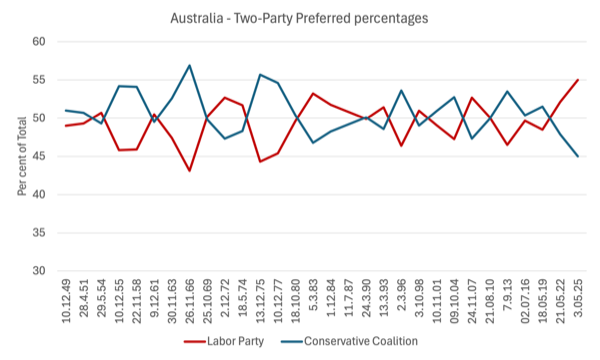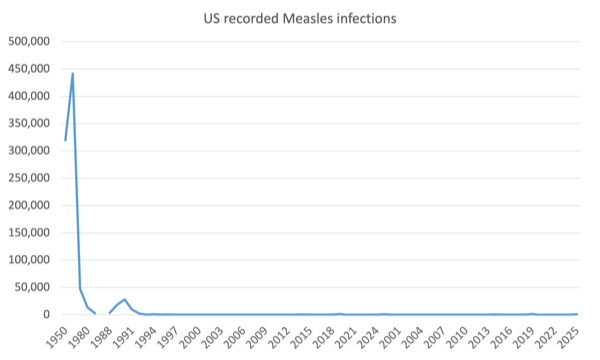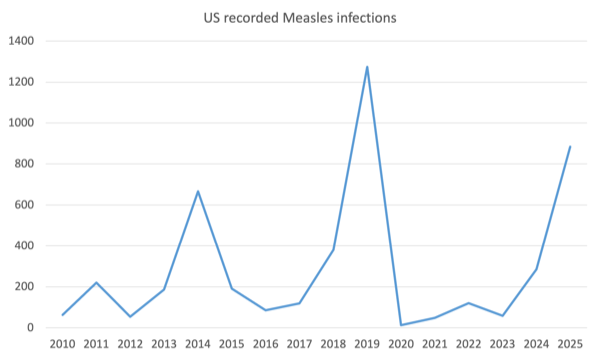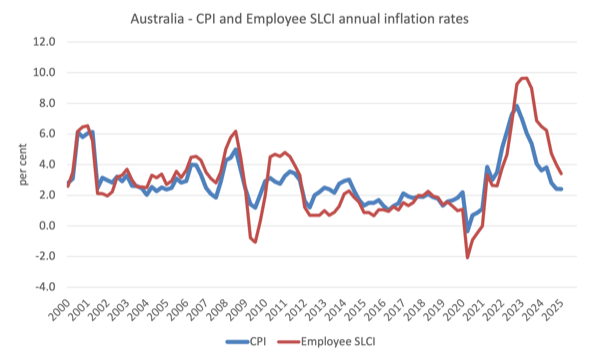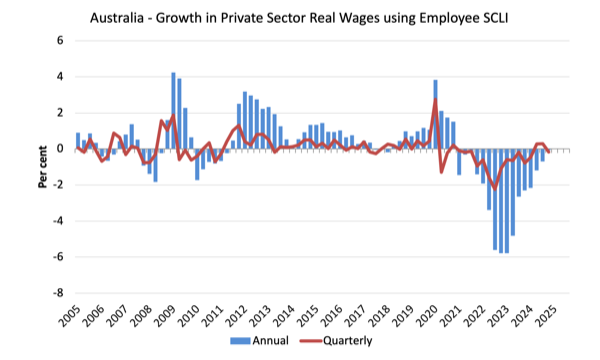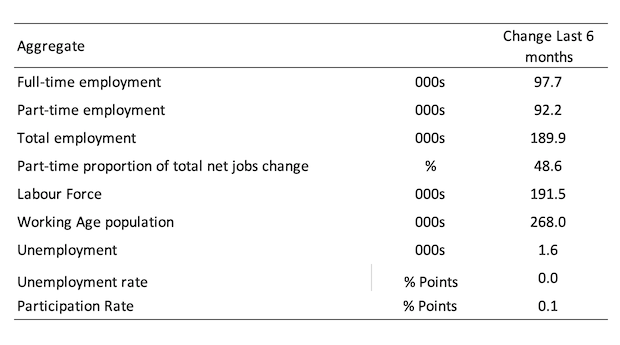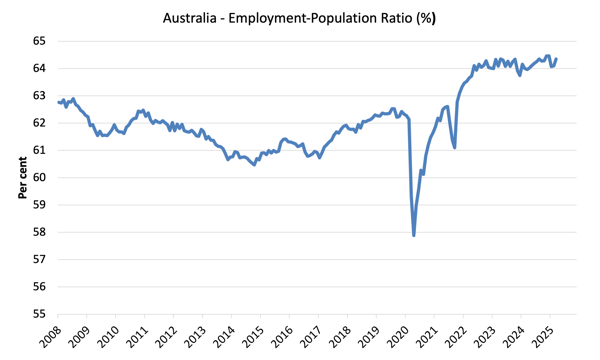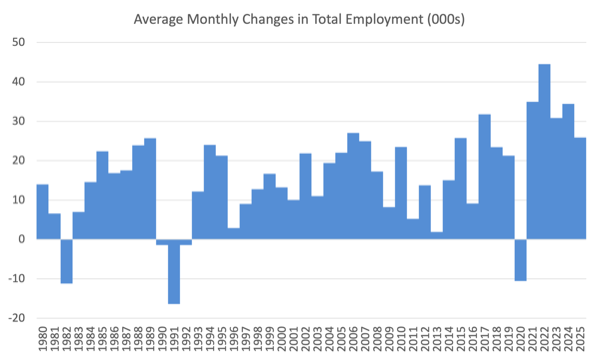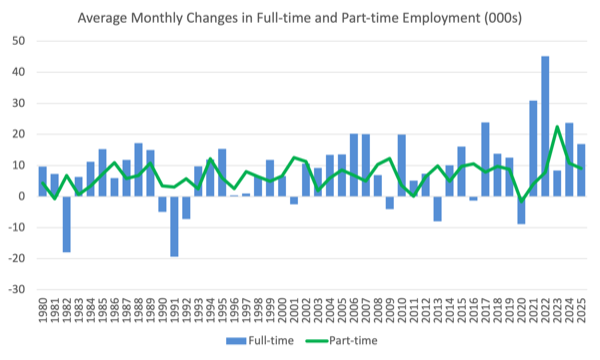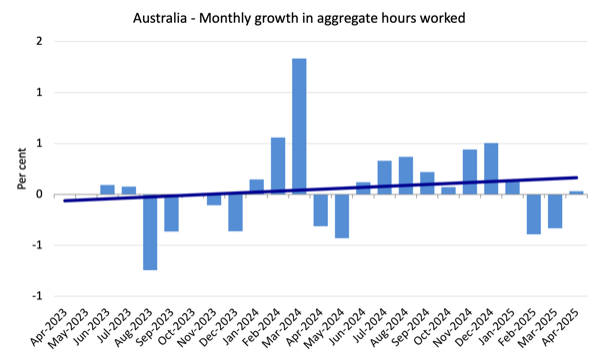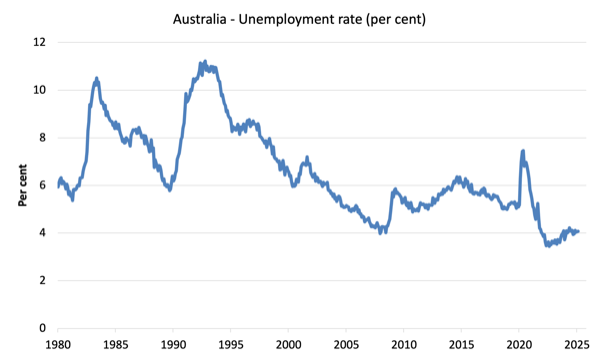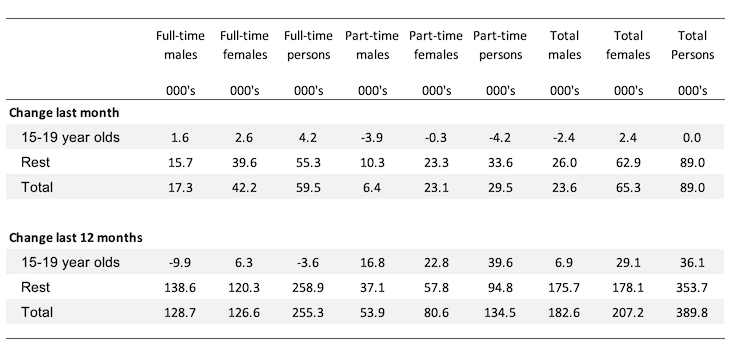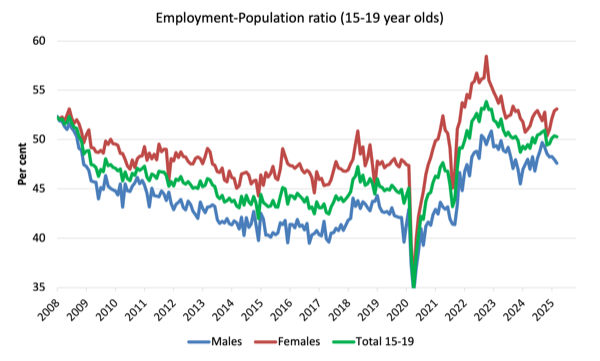@tobararbulu # mmt@tobararbulu
Australia is not America – elections after Trump
Australia is not America – elections after Trump
May 5, 2025
Last week, the – 2025 Canadian federal election – was held and the Liberal Party won for the fourth consecutive time securing 169 seats (in the 343-seat House of Commons), just short of a majority. They also won the popular vote (43.7 per cent of the vote – up 11.1 per cent), which was the first time they had achieved that since 2015. The Opposition Conservative Party leader lost his own seat in the election. On January 7, 2025, national polling saw support for the Conservatives of around 47 per cent and support for the government around 20 per cent. By the time the poll came, that had shifted dramatically in favour of the government. In between, came Trump. The UK Guardian analysis (March 19, 2025) – Canada’s Liberals on course for political resurrection amid trade war, polls show – said the shift “has little precedent in Canadian history, reflecting the outsized role played by an unpredictable US president”. To some extent, the craziness of the US political situation at present also impacted on the – 2025 Australian federal election – which was held on Saturday (May 3, 2025). The incumbent government, which was well down in the opinion polls before Trump took power, won in a landslide achieving the highest two-party preferred outcome in Australia’s electoral history. The parallels with the Canadian outcome are strong despite the different voting systems in both countries. Moreover, the conservative Liberal-National Coalition in Australia, the dominant party in the Post-WW2 era has been reduced to being little more than a far Right populist party. Similar to the Canadian situation, the Opposition leader also lost his seat, which was the first time that has ever happened in Australia. So Trump is undermining the very movements he is trying to promote. But what is very clear is that Australia is nothing like the US, despite some commonalities (language – sort of!).
How crazy is the state of US politics right now?
Answer: Very.
I woke up early on Sunday morning (May 4, 2025) and read the ABC news report – Donald Trump posts AI image of himself as the pope ahead of Catholic Church conclave – and wondered if I was reading a satirical story in the spirit of ‘America’s Finest News Source’ – the Onion.
This photo, posted by Trump himself on his own Twitter clone, summarises just how demented the whole US situation has become.
America’s early history as a revolutionary nation needs revival given the destruction the current Administration is causing.
I am no supporter of the Papacy but it is inconceivable in the wake of the former pope’s recent death, that a national leader would think it appropriate to fiddle with AI to cast themselves in this way.
It signals some deep mental fissure is at work.
While Australia was not being declared the 51st or perhaps 52nd state (given aspirations over Canada) of the US by the US president, the craziness entered the Australian electoral environment as well.
When Trump put out his plan to “level” the area of genocide in Gaza and create a “riviera under American control”, the conservative Opposition leader (Peter Dutton) praised the plan and said that Trump was a “big thinker and a deal maker”.
Dutton also claimed that the Arab nations should resettle the Palestinians after the US and Israel clears them out of Gaza.
Even the influential “Australian Jewish lobby” called Trump’s plan a “loopy proposition”, which amounted to “ethnic cleansing” (Source).
Dutton, thinking that Trumpism would appeal to the families in the outer metropolitan areas where the cost-of-living crisis was most apparent, then appointed a loud-mouthed colleague as the Shadow Minister of Government Efficiency (SMOGE), to clear out the public service agencies, mirroring Elon Musk’s ridiculous but damaging crusade through Washington.
The SMOGE was to cut “wasteful spending” and he said this new role would see 41 thousand public servants sacked and those that remained would no longer be allowed flexible working arrangements.
There were statements about public servants being lazy and abusing work-from-home rules.
Women voters who were not already alienated soon joined the ranks of those who were.
Flexible working arrangements have been very good for women in particular.
The Opposition claimed that research proved work-from-home arrangements lowered productivity, when, in fact, the opposite is supported by the serious research evidence.
SMOGE would also purge so-called cultural Marxism and woke agendas in the public service.
The SMOGE Minister provided the foreword to a newly published book, which demanded Australians realise that an (Source):
… insidious cultural Marxism is not just the barbarian at the gates, but it is in fact inside the gates. It’s wreaking havoc everywhere, undermining the West’s Judeo-Christian heritage, a heritage which has given us the most prosperous society the world has ever known, thus putting in grave danger the hard-fought freedoms we take for granted.
The newly appointed SMOGE MP was then exposed wearing a Trump MAGA cap and claimed it was all a joke.
It might have had the effect of signalling a ‘Make America Go Away’ message because the Opposition conservatives soon found out that its lurch into Trumpism was toxic in Australia but by then it was too late.
Message received – and the polls turned hard against them.
However, these characters cannot help themselves and at various times during the 35-day election campaign they lurched back into the Far Right messaging with attacks on indigenous Australians, attacks on young people, attacks on women, and more.
They also signalled they would turn to nuclear energy despite it being obvious that the cost would be prohibitive relative to a further investment in renewables and that the Earth would be fried before the new reactors were built and made operational.
Australians have a long dislike of the nuclear industry and the promise to buck that dislike was imposed on the Coalition by the junior partners – the Nationals – who represent the well-to-do farming communities and are now the epitome of Far Right crazy.
They forced the unsalable nuclear option as the price of them staying silent about a zero emissions target by 2050.
None of them believed in the climate issue and some actually were caught out telling followers that they were for ‘drill, baby, drill’ policies.
But in coming out with the nuclear plans, the Opposition looked more bizarre than they have ever looked and that is really saying something.
They couldn’t have designed and executed a “please don’t dare elect us” message any better.
The blue suit wearing Opposition men (the party is dominated by males) – in their Trump look-alike outfits – were declared unelectable by the Australian voters.
What all the evil woke Marxists were up to on Saturday is anybody’s guess, but notwithstanding the relentless messaging about these Marxists skulking around in shadows ready to do us all harm, the Labor government created history on Saturday and as a first-term government actually increased their majority.
A rare feat.
To put the rest of this post in context, I was happy when the Labor Party retained government on Saturday even as the landslide in their favour emerged.
But that is in the context of they are the lesser evil.
It is clear that Australia (and probably Canada although I am not an expert on that country) is not America.
We outrightly reject American cultural imperialism.
I recall some years ago when neoliberalism was taking hold here that the Pentecostal lot tried to make those religious TV crusaders from the US viable voices on Australian television.
We had midnight to dawn religious programs for a short while.
They disappeared as quickly as they came as no-one really could be bothered watching comedy at that time of day.
There is no thirst in Australia for the types of narratives that seem to elect Presidents in the US.
We just think they are crazy stuff.
To understand the next graph, readers should be aware of the particular voting system we use in Australia.
Many countries, including Canada use the ‘First-past-the-post’ system where a candidate is elected if they receive the most votes in a single count.
So with many candidates, a successful candidate might get say 20 per cent overall and still win.
The problem then is 80 per cent of voters didn’t want that person elected.
To overcome that issue, the – Electoral system of Australia – uses preferential voting, where, in the case of the lower House of Representatives, voters must “mark a preference for every candidate on the green ballot paper” (Source).
So, primary votes are cast for the voters preferred candidate.
But the voter also nominates or ranks the other candidates.
If on the primary vote there is no absolute majority achieved, the Electoral Commission then excludes the least popular candidate and their preferences are distributed to the remaining candidates.
A process of attrition occurs until there are only two candidates left and the successful one is the candidate with the absolute majority.
The so-called ‘Two Party-Preferred’ (TPP) measure is thus the final distributed outcome.
That is what the graph shows for the nation as a whole and recognises the dominance of the two major parties – the Labor Party and the Coalition (which is a combine).
The graph shows this statistic for every federal election since 1949.
Saturday’s election gave Labor party the largest TPP outcome and the Conservatives the lowest TPP outcome since that data was available.
The lower house comprises 150 seats in Australia.
Going into the 2022 federal election, the conservatives were in government with 77 seats and lost office at that election, gaining only 58 seats and a TPP vote of 47.87 per cent (after a primary vote of just 35.7 per cent).
While the 2025 election results are not fully finalised, at the time of writing, the conservatives have lost a further 18 seats and had a TPP of 45.29 per cent (with a primary vote of 32 per cent).
The Labor government improved from 77 seats in 2022 to now holding (so far in the count) 86 seats.
First-term governments just don’t improve majorities historically.
The Oppositional leader lost his seat as did a number of touted future leaders, leading to what the press is now calling a leadership vacuum.
There was one headline in this morning’s Age newspaper (May 5, 2025) – The Liberal Party does not need a renovation. It’s a knockdown rebuild job – a ‘knock down’ means it is worthless.
The author of that article was a former conservative party federal treasurer.
He admitted that the Liberal Party “is both organisationally moribund and dysfunctional” and assessed Saturday as “one of the more lamentable election nights since Federation” (Federation was in 1901).
The point is that the once dominant Liberal-National Coalition has over the course of two elections been reduced to a rump as a Far Right populist party with little credible policy narrative, who tried to win the election with a string of Trump-like culture and hate statements.
Australia is not America.
We don’t fall for that sort of narrative.
Australian politics has been recast over last weekend.
The disarray that the Liberal-Coalition now finds itself in is breathtaking.
Already, the recriminations have begun and there are influential elements demanding the Coalition go more Trump-like (presumably they saw some Marxists lurking in alleys or somewhere).
There is no real leadership left in the Liberal party.
The proportion of women in the party is low and the voting women dislike the misogyny of the blue suits.
The youth of Australia dislike the conservatives who are basically climate change denialists writ large.
Is there a lesson for the rest of the world here?
We now have two observations in the recent period – Canada and Australia.
While the electoral systems are different, the resonance between the two outcomes is high.
It is plausible that Trump and his crazies are actually providing fertilisation for a return of social democratic political forces.
I am not saying the Australian Labor Party is a desirable social democratic force.
But they resemble one, even if they have been infected with neoliberalism.
The conservatives have gone so far to the Right that they had made themselves irrelevant despite their dominant history.
Could the great socialist and social democratic parties of Europe, for example, see a similar trend by not kowtowing to the Trump bullying?
I am not convinced yet.
My fear is that the authoritarian sentiment is more rooted in European countries than it is in the English-speaking countries (excluding the US).
The performance of AfD in the last German elections tells me that the far Right is anything but dead in that nation.
The far Right didn’t win a seat in the 2025 Australian election and gained around 8 per cent of the total primary vote.
Conclusion
Two good election outcomes – Canada and Australia – demonstrate how isolated the US has become in the English-speaking world.
Trump would get nowhere here.
oooooo
@tobararbulu # mmt@tobararbulu
I wonder how progressives are viewing the fact that they gave credence to a key Trump operative
I wonder how progressives are viewing the fact that they gave credence to a key Trump operative
May 12, 2025
It’s a big data week for me and today’s post is more of a news information offering rather than a deeper analysis of a topic, which is my usual pattern. However, I discuss in some detail recent appointments to the US Health Administration, some of which were prominent during the early COVID years and received considerable promotion from so-called Left progressives. One of the leading characters in the attack on government restrictions is now Trump’s appointment to the major national health research funding agency and he has vowed to defund any institution that doesn’t follow the ‘freedom’ dictates of the authoritarian regime that Trump is running. I wonder how these progressives are viewing the fact they gave credence to a key Trump operative.
Real Progressives Podcast – May 10, 2025
A few weeks ago, I spoke with Steve from Real Progressives about the increasing isolation of the US under the new Trump Administration.
Here is the edited interview I did for their ‘Macro N Cheese’ segment. (Ep 327 – Isolation with Bill Mitchel1)
You might find it interesting.
The Truth about the ‘Budget’ Podcast (“The truth about the budget” with Bill Mitchell2)
I also did a recent interview with an Australian podcast – Concept Economy – which aims to bring economic concepts to young people to better educate their understanding.
It was a fairly wide-ranging discussion about the fundamentals of Modern Monetary Theory (MMT) and my reaction to noted attacks on our work.
A COVID-19 update – can those ‘anti-woke’ progressives sleep at night?
Regular readers will know my position on the COVID-19 pandemic and the early attempts by various vested interests to deny that there was a problem.
In this blog post – Why are the progressive left mixing with the dark right on Covid? (January 12, 2022) – I wrote about the way in which so-called (self-styled) Left progressive voices were advancing ideas that were introduced during the pandemic by the hard Right.
The anti-vax, anti-lockdown and anti-mandate lobby were extremely vocal in the first few years of the pandemic and even now their constant negativity has left a legacy.
In Australia, there are now significant declining rates of influenza vaccinations, which is threatening vulnerable groups at both ends of the age spectrum.
For example, Australia’s Chief Medical Officer said that (Source):
… figures showing vaccination rates in children aged under five dropped from 30.3% in 2023 to 25.8% in 2024.
There was also a steady decline in flu vaccination for those aged 65 and older, from 69.7% in 2022 and 63.6% in 2023, to a low of 61.1% in 2024.
This is directly the result of the campaigns waged during those early COVID years to discredit vaccinations.
During those early COVID years, there were those who purport to represent the ‘Left’ position, lecturing us about how lockdowns and vaccine requirements are a betrayal of the progressive cause and only fascists would support them.
They provided constant social media support for others, who by any assessment, are on the neoliberal right, who also oppose lockdowns and mandates (including being required to wear masks).
Several of these characters, who were regularly receiving social media support from prominent ‘socialist’ commentators, were involved in the creation of a new ‘academic’ venture at a little-known college in Michigan – Hillsdale College – called the “Academy for Science and Freedom”.
The ‘Academy’ claimed in its press release that its mission is to engage in a “free exchange of scientific ideas … in the pursuit of truth” and was inspired by the “worst public health fiasco in history”.
What is Hillsdale College?
This Politico article (May 12, 2018) – The College That Wants to Take Over Washington – tells us that Hillsdale College is a breeding ground for young, right-wing, Christian conservatives.
Just the type that progressive socialists would dream of forming a coalition with!
The College ‘cosied’ up to the Trump Administration and its president was a strong Trump supporter and advertises for funds on Fox News.
It provides a conduit for conservative politicians – speechwriters and other administrative roles.
Its former president, was a vocal critic of “big government” while pushing a conservative Christian morality. He came unstuck, as many of these types do, when his daughter-in-law committed suicide after public allegations that she and the former president were involved in illicit sexual relations over a 19 year period. There were also question marks about whether she had actually committed suicide.
His successor had come from a ‘think tank’ that promoted the construction of a ‘conservative citadel’ which advocated anti-government messages.
Hillsdale has been a major beneficiary of financial support from the infamous Koch Brothers, who in this article (December 15, 2015) – Koch brothers supersize higher-ed spending – were reported as intent on expanding their already considerable financial support for selected US higher education institutions, as an exercise in building:
… a massive organizational network fighting to enact deregulatory government policies and elect conservative political candidates … [and] … promoting free markets and laissez-faire capitalism in the United States.
The brothers also attach “certain strings to their contributions”:
… such as control over curriculum, and more recently, obtaining personal information about students.
As COVID was killing millions, Hillsdale and the Koch Network partnered in opposing public health measures designed to attenuate the spread of the virus and rising death rates.
Researchers associated with the US-based – Center for Media and Democracy (CMD) – which investigates “the corruption that undermines our democracy, environment and economic prosperity”, published at the time research showing that a Koch Foundation was bankrolling the new venture at Hillsdale College, which was being primed to oppose protective health policies.
The article (December 22, 2021) – How The Koch Network Hijacked The War On COVID – reports that the “public health fiasco” that the new centre at Hillsdale is attacking include:
… government pandemic measures like mask and vaccine mandates, contact tracing, and lockdowns.
It has recruited several fringe academics including “Scott Atlas, Jay Bhattacharya, and Martin Kulldorff” – who are “connected to right-wing dark money attacking public health measures.”
The Great Barrington Declaration (GBD) was authored by some characters connected to this new Academy.
It was signed at a conference organised by the American Institute of Economic Research (AIER), which receives funding from “anti-regulation” groups and is deeply tied up with the Mont Pelerin Society and “the Koch-backed Cato Institute” as outlined in – How The Koch Network Hijacked The War On COVID (December 22, 2021).
The GBD recommended that governments should:
… allow those who are at minimal risk of death to live their lives normally to build up immunity to the virus through natural infection, while better protecting those who are at highest risk. We call this Focused Protection.
In other words, governments should have let the virus rip through the population and only placed protections on the most vulnerable – aged care residents, and the like.
The authors claimed, for example:
… nursing homes should use staff with acquired immunity and perform frequent testing of other staff and all visitors.
It was all predicated on their belief that we would reach herd immunity through natural infection.
Non-vulnerable citizens, accordingly should “immediately be allowed to resume life as normal … Schools and universities should be open for in-person teaching … sports, should be resumed … Young low-risk adults should work normally, rather than from home .. Restaurants and businesses should open. Arts, music, sport and other cultural activities should resume.”
The implication was that once infected, the disease would cause little sickness and then immunity would offer on-going protection.
Once a skilled, aged care worker, for example, had become ill and recovered they could step back in the workplace dealing with the most vulnerable because they had become immune to the disease.
Except, of course, reinfection within a relatively short period has become a characteristic of Covid, which has compromised the whole notion of herd immunity.
Meanwhile millions have died from Covid, who would not have died any time soon, and that pattern of mortality continues even though it is now harder to get regular data.
And increasing numbers of people are exhibiting chronic Long Covid which has derailed their lives.
Millions of workers are now ‘disabled’ as a result and their working lives are over.
While the GBD appeared to have ‘academic weight’ because it was signed at the official sounding American Institute for Economic Research (AIER), which is located at Great Barrington, Massachusetts.
However, as the – Center for Media and Democracy (CMD) – noted, the reality was that it:
… arose out of the world of right-wing dark money and corporate interests, and many of its signatories aren’t verified. AIER … is a Koch-tied libertarian think tank …
Now all that is history.
But I wonder what those so-called progressive voices that supported all this stuff back in the early days of COVID thought when they saw Trump appoint one of the key GBD players – Jay Bhattacharya – as the new director of the National Institute of Health in the US.
There he was with Bobby Kennedy and Martin Makary – after being appointed.
He has told the press that he will defund universities that do not conform to his version of ‘academic freedom’.
In this Independent article (December 6, 2024) – Trump’s team weighs withholding massive research grants from universities that are too ‘woke’: Report – interprets this attack on universities as:
… punishing those that apparently don’t adequately embrace perspectives championed by conservatives.
He is in a sort of weird payback mode:
Bhattacharya wants to take on what he views as academic conformity in science, which pushed him aside over his criticism of the response to the COVID-19 pandemic, including his opposition to school closures and mask mandates to stop the spread of the virus.
Remember back in 2020 when the pandemic first emerged, Bhattacharya claimed only “40,000 Americans would be killed by the pandemic”.
The number now exceeds “1.2 million” and is rising.
Of course, adding so-called “nonresearch factors in medical-research grant decisions” has been deeply opposed by the science community and is likely to retard progress in discovering knowledge that will advance human health.
Makary is opposed to “broad vaccine mandates”.
So how do these ‘progressives’ feel now they see their COVID resistance leader who they relentlessly supported via social media, in books and Op Eds, now part of the US Administration’s health team that is defunding health research, providing misinformation about vaccines (see Kennedy’s claims about the measles vaccine) and more.
The case of measles is an example.
The Independent article cited above noted that;
Mr Kennedy, who became the nation’s top health official in February as part of the new Trump administration, has for decades helped sow doubts regarding the safety and efficacy of vaccines, contributing to a decline in vaccination rates.
Here are two interesting graphs showing the incidence of the measles infection in the US from 1950 to 2025.
The data is not continuous up to 1988 (observations for 1950, 1960, 1970, 1980 and 1985) then continuous.
The first graph shows the dramatic drop in cases to almost zero from the 1970s.
What happened?
This article from the Infectious Diseases Society of America Foundation – Measles vaccination: Know the facts – notes that:
Measles is a highly contagious viral infection that frequently causes a severe flu-like illness accompanied by a rash. Complications occur in 3 in 10 who get measles, and young children are especially vulnerable …
Before the vaccine was available in 1963, nearly every child got measles by age 15. The disease sickened 3 million to 4 million people and led to about 500 deaths and 48,000 hospitalizations every year in the U.S. …
Due to a highly effective vaccination program, measles was declared eliminated from the U.S. in 2000, a historic public health achievement. However, outbreaks related to vaccine hesitancy have been occurring worldwide in recent years. In the U.S., more than 700 cases of measles have been reported so far in 2025, more than double the cases reported in all of 2024.
The second graph show the situation since 2010, with spikes during Trump’s first administration and a new “ongoing measles outbreak” since the start of this year (Source).
The data shows that:
From 1 January to 20 March 2025, 17 States have reported a total of 378 cases of measles, including two deaths – the first deaths related to measles in the United States in a decade. The majority of cases are in children who are unvaccinated or have unknown vaccination status, and the overall hospitalization rate is 17%.
That incidence has now climbed to close to 900.
A news report (April 4, 2025) – Measles vaccination rate may be even lower than estimated, leaving kids vulnerable amid outbreak – reported “that nearly a third of young children who were eligible to be vaccinated against the disease did not get their first shot on schedule.”
So how do these progressives feel having vehemently supported the views of these characters during the early years of COVID?
oooooo
Australian wages growth – real wages stable – no breakout evident https://billmitchell.org/blog/?p=62555
Australian wages growth – real wages stable – no breakout evident
May 14, 2025
Throughout the recent period of higher than usual inflation, the Reserve Bank of Australia kept telling us that they had to keep hiking rates (even though the inflation trajectory was downward) because they were predicting a wages explosion. Who told them about that? Their so-called business liaison meetings. The business sector is always claiming that a crippling wages breakout is about to happen because they want policy makers to suppress employment growth to give them the upper hand in wage negotiations. Anyway, no such wages explosion occurred. And the latest data shows that things haven’t changed. Today (May 14, 2025), the Australian Bureau of Statistics released the latest – Wage Price Index, Australia – for the March-uarter 2025, which shows that the aggregate wage index rose by 3.4 per cent over the 12 months (up 0.2 points on the last quarter). While most commentators will focus on the nominal wages growth relative to CPI movements, the more accurate estimate of the cost-of-living change is the Employee Selected Living Cost Index, which is still running well above the CPI change. Using that measure, purchasing power of the nominal wages was stable in the March-quarter. There is no wages breakout happening.
Latest Australian data
The Wage Price Index:
… measures changes in the price of labour, unaffected by compositional shifts in the labour force, hours worked or employee characteristics
Thus, it is a cleaner measure of wage movements than say average weekly earnings which can be influenced by compositional shifts.
The summary results (seasonally adjusted) for the December-quarter 2024 were:
| Measure |
Quarterly (per cent) |
Annual (per cent) |
| Private hourly wages |
0.9 (+0.2 points) |
3.3 (+0.1 point) |
| Public hourly wages |
1.0 (+0.4 points) |
3.6 (+0.8 points) |
| Total hourly wages |
0.8 (+0.1 point) |
3.4 (+0.2 points) |
| Employee Selected Cost-of-Living measure |
1.1 (+0.8 points) |
3.4 (-0.6 points) |
| Basic CPI measure |
0.9 (+0.7 points) |
2.4 (stable) |
| Weighted median inflation |
0.7 (+0.2 points) |
3.0 (-0.4 points) |
| Trimmed mean inflation |
0.7 (+0.2 points) |
2.9 (-0.3 points) |
On price inflation measures, please read my blog post – Inflation benign in Australia with plenty of scope for fiscal expansion (April 22, 2015) – for more discussion on the various measures of inflation that the RBA uses – CPI, weighted median and the trimmed mean.
The latter two aim to strip volatility out of the raw CPI series and give a better measure of underlying inflation.
The ABS press release – Wages rise 3.4% in the year to March 2025 – notes that:
The Wage Price Index (WPI) rose 0.9 per cent in the March quarter 2025, and 3.4 per cent annually …
Annual wage growth ticked up for the first time since the June quarter 2024. The 3.4 per cent increase in wages for the year to the March quarter 2025 was higher than the 3.2 per cent to the December quarter 2024, but lower than the 4.0 per cent at the same time last year. …
Private sector wage growth was also influenced by administrative wage adjustments due to the Stage 3 Aged Care Work Value Case, and the Early Childhood Education and Care Worker Retention Payment. It was also impacted by regular March quarter wage and salary reviews …
The larger than usual March quarter contribution from enterprise agreement-covered jobs was mainly driven by the new state-based enterprise agreements in the public sector …
Summary assessment:
1. While the quarterly results show a slight increase in the wages growth rate, the main reason was the timing of particular agreements and administrative adjustments.
2. Over the 12-month period there was an improvement in the real purchasing power of nominal wages if we use the CPI as the relevant measure.
3. However, in saying that, we have to consider what is the most appropriate cost-of-living measure to deploy (see below).
4. When the price movements for the expenditure patterns that employees follow are taken into account – that is, using the Employee Selected Cost-of-Living measure – real purchasing power was unchanged in the March-quarter 2025.
Inflation and cost of living measures
There is a debate as to which cost-of-living measure is the most appropriate.
The most used measure published by the Australian Bureau of Statistics (ABS) is the quarterly ‘All Groups Consumer Price Index (CPI)’.
Reflecting the need to develop a measure of ‘the price change of goods and services and its effect on living expenses of selected household types’, the ABS began publishing a new series in June 2000 – the Analytical Living Cost Indexes – which became a quarterly publication from the December-quarter 2009.
In its technical paper (published October 27, 2021) – Frequently asked questions (FAQs) about the measurement of housing in the Consumer Price Index (CPI) and Selected Living Cost Indexes (SLCIs) – the ABS note that:
The CPI and SLCIs are closely related. All these indexes measure changes in prices paid by the household sector (consumers) for a basket of goods and services provided by other sectors of the economy (e.g. Government, businesses). The weights in the ‘basket’ represent amounts of expenditure by households on goods and services bought from other sectors. Goods traded between households (like buying and selling existing houses) are excluded as both sides of the transaction occur within the household sector.
I discuss these indexes in detail in this blog post – Australia – real wages continue to decline and wage movements show RBA logic to be a ruse (August 16, 2023).
In effect, the SLCIs represent a more reliable indicator of ‘the extent to which the impact of price change varies across different groups of households in the Australian population’.
There are four separate SLCIs compiled by the ABS:
- Employee households.
- Age pensioner households.
- Other government transfer recipient households.
- Self-funded retiree households
The most recent data – Selected Living Cost Indexes, Australia – was published by the ABS on February 5, 2025 for the December-quarter 2024.
For the 12 months to the March-quarter 2025:
- Employee households: +3.4 per cent (-0.6 points).
- All groups CPI’: +2.4 per cent (stable).
The following graph shows the differences between the CPI-based measure and the Employee SLCI measure which better reflects the changes in cost-of-living.
Thus, when specific household expenditure patterns are more carefully modelled, the SLCI data reveals that the cost-of-living squeeze on ‘employee households’ is more intense than is depicted by using the generic CPI data.
The ABS considers the ‘Employee households SLCI’ to be its preferred measure designed to capture cost-of-living changes more accurately for ‘households whose principal source of income is from wages and salaries’.
Summary of Real Wage Movements
- The relevant cost-of-living measure for workers has risen by 3.4 per cent over the last year matching the nominal overall wages growth – so no change in the overall purchasing power of wages.
- However, the media wrongly focus on the CPI as the relevant inflation measure and conclude that with the rise in the CPI of 2.4 per cent, the nominal wage growth of 3.4 per cent delivers a real wage rise of 1.0 point.
- Which is misleading in terms of the purchasing power movements.
Real wage trends in Australia
The summary data in the table above confirms that real wages growth overall (private and public sectors) stagnated over the last 12 months.
For private sector workers, the dramatic loss of purchasing power continued – private real wages have fallen continuously for the last 16 quarters.
The following graph uses the Employee SLCI measure to show the movement of real wages in the private sector from 2005 to the March-quarter 2024.
The fluctuation in mid-2020 is an outlier created by the temporary government decision to offer free child care for the March-quarter which was rescinded in the March-quarter of that year.
Overall, the record since 2013 has been appalling.
Throughout most of the period since 2015, real wages growth has been negative with the exception of some partial catch-up in 2018 and 2019.
The systematic real wage cuts indicate that wages were not driving the recent inflationary episode.
Workers have only been able to secure partial offset for the cost-of-living pressures caused by the supply-side, driven inflation.
The great productivity rip-off continues
While the decline in real wages means that the rate of growth in nominal wages is being outstripped by the inflation rate, another relationship that is important is the relationship between movements in real wages and productivity.
As part of their attempt at justifying the interest rate hikes, the RBA were also making a big deal of the fact that wages growth is too high relative to productivity growth.
Historically (up until the 1980s), rising productivity growth was shared out to workers in the form of improvements in real living standards.
In effect, productivity growth provides the ‘space’ for nominal wages to grow without promoting cost-push inflationary pressures.
There is also an equity construct that is important – if real wages are keeping pace with productivity growth then the share of wages in national income remains constant.
Further, higher rates of spending driven by the real wages growth can underpin new activity and jobs, which absorbs the workers lost to the productivity growth elsewhere in the economy.
The Treasury likes to use the Real Unit Labour Costs (also equivalent to the wage share in income) as the measure of business costs.
It is the ratio of real wages to labour productivity.
From the March-quarter 2020 until the September-quarter 2024, RULCs growth was negative, which means there was a major redistribution of national income going away from wages to profits.
In the last two quarter, there has been positive but modest growth.
Howeever, this has occurred not because there has been growth in real wages.
Rather, it is because both real wage growth and productivity growth has been negative, but the latter has been more negative than the former.
So it is really lagging productivity growth that is the culprit and that reflects on management decisions (investment, innovation, etc) rather than trade unions forcing excessive wage increases.
We can see that in the following graph which shows the total hourly rates of pay in the private sector in real terms deflated with the CPI (blue or lower line) and the real GDP per hour worked (from the national accounts) (green or upper line) from the June-quarter 1999 to the March-qquarter 2025.
It doesn’t make much difference which deflator is used to adjust the nominal hourly WPI series. Nor does it matter much if we used the national accounts measure of wages.
But, over the time shown, the real hourly wage index has grown by only 5.5 per cent, while the hourly productivity index has grown by 24.1 per cent.
The dip in productivity growth is due to the parlous investment rates of Australian businesses.
If I started the index in the early 1980s, when the gap between the two really started to open up, the gap would be much greater. Data discontinuities however prevent a concise graph of this type being provided at this stage.
For more analysis of why the gap represents a shift in national income shares and why it matters, please read the blog post – Australia – stagnant wages growth continues (August 17, 2016).
Where does the real income that the workers lose by being unable to gain real wages growth in line with productivity growth go?
Answer: Mostly to profits.
These blog posts explain all this in more technical terms:
1. Puzzle: Has real wages growth outstripped productivity growth or not? – Part 1 (November 20, 2019).
2. Puzzle: Has real wages growth outstripped productivity growth or not? – Part 2 (November 21, 2019).
I did some work the other day computing an estimate of what the average weekly earnings (AWE) in Australia would be if the real wage had have kept pace with productivity growth over this period.
I will write more about that in another blog post.
But the preliminary result of my calculation was that:
1. In August 2023, nominal AWE in Australia were $A1,885.60 per week.
2. If real wages had have followed the productivity trajectory (that is RULC were stable) over the period shown in the graph above, then the nominal AWE in Australia would have $A2,170.20 per week in August 2023.
3. That is, on average, weekly earnings would have been $A284.60 higher or $A14,230 higher on annual basis.
4. That gap will be significantly bigger by August 2025 and I will report my updates later.
5. That is the extent of the productivity rip-off in Australia.
Conclusion
In the March-quarter 2025, Australia’s nominal wage growth grew by 3.4 per cent.
While most commentators will focus on the nominal wages growth relative to CPI movements, the more accurate estimate of the cost-of-living change is the Employee Selected Living Cost Index, which is still running well above the CPI change.
Using that measure, purchasing power of the nominal wages was stable in the March-quarter.
oooooo
Australian labour force data – employment growth absorbs rising participation without increasing the unemployment rate
ooo
Australian labour force data – employment growth absorbs rising participation without increasing the unemployment rate
May 15, 2025
Last month’s labour force data for Australia revealed a sluggish labour market, seemingly on the cusp of contraction as other indicators were pointing in that direction. The Australian Bureau of Statistics (ABS) released the latest labour force data today (May 15, 2025) – Labour Force, Australia – for April 2025, which revealed that employment growth was strong enough to absorb a 0.3 point rise in participation without increasing the unemployment rate. The broad labour underutilisation rate (sum of unemployment and underemployment) did, however, rise 0.2 points to 10.1 per cent on the back of a rise in underemployment. The fact that 10.1 per cent of available labour are not being used indicates that folly of those who claim Australia is close to full employment. There is substantial scope for more job creation given the slack that is present.
The summary seasonally-adjusted statistics for April 2025 are:
- Employment rose 89,000 (0.6 per cent) – full-time employment rose by 59.5 thousand (0.6 per cent) and part-time employment rose by 29.5 thousand (0.6 per cent).
- Unemployment rose by 6,300 (1.0 per cent) to 621,100.
- The unemployment rate was steady on 4.1 per cent.
- The participation rate rose by 0.3 points 67.1 per cent.
- The Employment-population ratio rose 0.3 points to 64.4 per cent.
- Monthly hours worked rose 1 million (0 per cent).
- Underemployment rose 0.1 point (28.4 thousand) to 6 per cent (920.5 thousand).
- The Broad Labour Underutilisation rate (the sum of unemployment and underemployment) rose 0.2 points to 10.1 per cent.
- Overall, there are 1541.6 thousand people either unemployed or underemployed.
The ABS press release – Unemployment rate steady at 4.1% in April – noted that:
With employment increasing by 89,000 people and the number of unemployed increasing by 6,000 people, the unemployment rate remained steady at 4.1 per cent for April …
The rise in employment was larger for females, up 65,000 (0.9 per cent), while male employment was up 24,000 (0.3 per cent). Female employment growth was mainly in full-time workers, which rose 42,000 (1.1 per cent) in April. Female part-time workers rose by 23,000 (0.8 per cent) …
The strong growth in employment led to a rise in the employment-to-population ratio of 0.3 percentage points to 64.4 per cent in April, just below the record high of 64.5 per cent seen in January.
The addition of 6,000 unemployed people meant the labour force grew by 95,000 people and the participation rate rose by 0.3 percentage points to 67.1 per cent …
The underemployment rate rose by 0.1 percentage points to 6.0 per cent in April 2025 … The underutilisation rate, which combines the unemployment and underemployment rates, rose by 0.2 percentage points to 10.1 per cent.
Summary
1. The sluggishness from the last month gave way to stronger employment growth, a rise in participation and no significant increase in unemployment.
2. The employment-population ratio rose as employment growth outstripped a relatively strong growth in underlying population and the participation rate (which significantly added to the labour force).
Employment growth much stronger
- Employment rose 89,000 (0.6 per cent).
- Full-time employment rose by 59.5 thousand (0.6 per cent).
- Part-time employment rose by 29.5 thousand (0.6 per cent).
The following graph shows the growth in total, full-time, and part-time employment for the last 24 months.
The following table shows the shifts over the last 6 months which helps to see the underlying trend.
Employment has just kept pace with the increase in the labour force over this period, which is why the change in unemployment is close to zero (1,600).
The Employment-to-Population ratio provides a measure of the state of the labour market that is independent of the supply shifts in the labour market (driven by the shifts in the participation rate).
The underlying working age population grows steadily while the labour force shifts with both underlying population growth and the participation swings.
The following graph shows the Employment-Population ratio rose 0.3 points in April 2025 and is 0.1 point below its maximum.
The next graphs show the average monthly change in total employment (first graph) and full- and part-time employment (second graph).
For total employment the monthly average changes were:
- 2022 – 44.5 thousand
- 2023 – 30.8 thousand
- 2024 – 34.4 thousand
- 2025 so far – 25.9 thousand
Monthly hours worked – barely changes
Monthly hours worked rose by 0.6 million hours (0.03 per cent) in April after two consecutive months of decline.
The following graph shows the growth in monthly hours worked for the last 24 months, with the straight line being a simple linear regression to indicate trend.
Unemployment rose by 6,300 in April
With total employment rising by 89,000 and the labour force rising by 95.3 thousand, official unemployment rose by around 6,300.
The unemployment rate rose by 0.02 points but when rounded remained at 4.1 per cent.
The following graph shows the evolution of the official unemployment rate since 1980.
Broad labour underutilisation – 10.1 per cent in April
- Underemployment rose 0.1 point (28.4 thousand) to 6 per cent (920.5 thousand).
- The Broad Labour Underutilisation rate (the sum of unemployment and underemployment) rose 0.2 points to 10.1 per cent.
- Overall, there are 1541.6 thousand people either unemployed or underemployed.
The following graph shows the evolution of underemployment and the Broad labour underutilisation rate since 1980.
Teenage labour market – zero employment growth
- Total teenage (15-19) employment rose by 0 thousand (0.0 per cent) in April 2025.
- Full-time employment rose by 2.4 thousand (2.2 per cent).
- Part-time employment fell by 2.4 thousand (-0.6 per cent).
The following table summarises the shifts in the teenage labour market for the month and over the last 12 months.
To put these changes into a scale perspective (that is, relative to size of the teenage labour force) the following graph shows the shifts in the Employment-Population ratio for teenagers.
The Teenage Employment-Population ratios and their monthly changes in April 2025were:
- Males: 47.6 per cent -0.4 points
- Females: 53.1 per cent +0.2 points
- Total: 50.3 per cent -0.1 point
Conclusion
My standard warning to take care in interpreting monthly labour force changes – they can fluctuate for a number of reasons and it is imprudent to jump to conclusions on the back of a single month’s data.
- was strong enough to absorb a 0.3 point rise in participation without increasing the unemployment rate.
- Overall, the labour market is not showing signs of a significant downturn yet.
- The broad labour underutilisation rate (sum of unemployment and underemployment) did, however, rise 0.2 points to 10.1 per cent on the back of a rise in underemployment.
- The fact that 10.1 per cent of available labour are not being used indicates that folly of those who claim Australia is close to full employment. There is substantial scope for more job creation given the slack that is present.
oooooo
A Just Transition framework is required to head off the climate denying Right https://billmitchell.org/blog/?p=62568
ooo
A Just Transition framework is required to head off the climate denying Right
- May 19, 2025
The recent federal election in Australia saw the conservative opposition coalition lose further seats in parliament building on their disastrous 2022 result. The coalition is made up of conservative urban types (the so-called Liberal Party) and the National party, which represents the rural lobby. The Nationals are essentially climate-change denialists and because the Liberals require them to have any hope to govern, the smaller rural lobby can dominate policy choices. To convince the Nationals to adopt a net-zero by 2050 stance, the Liberals had to agree to propose a shift to Nuclear power, which was neither realistic in a logistical sense or economic in a cost sense. The electorate clearly rejected that option at the recent election. Now the Liberals, who are facing an existential crisis after the devastating loss, has to make a choice – stick with the Nationals and jettison net zero or break the Coalition and pitch a climate policy that will be acceptable to voters. The problem is that neither option will deliver them electoral success. Progressives are enjoying some rare schadenfreude over this conservative dilemma. It seems that the British Labour Party has got itself into a similar dilemma, with pressure from the Right-wing Reform Party to water down its climate policy. But what is more interesting in the UK setting is the role played by Labour’s former Prime Minister, who is also now attacking ‘green’ stances. I predict that will not end well for Starmer and Co. Fortunately, the Australian Labor party, which is also in government is sticking to a more ambitious climate agenda, although, even then, it is not ambitious enough. However, governments that are pursuing a net zero agenda must provide security for communities and regions that will bear the brunt of the policies introduced. The resistance to change that political forces such as Reform UK exploit can be easily offset if governments accompany their net zero agenda with a Just Transition framework. However, there is an absence of policy development in that area.
Developing effective climate policy is being undermined in many ways.
First, the attacks by outright climate denialists eats up some votes.
These characters use all sorts of misinformation and pseudo science to justify their claim that there is no anthropomorphic climate shifts occurring.
Second, and related, there are those who claim a ‘green agenda’ is the plaything of the ‘woke’ elites in our societies whose employment fortunes are not directly undermined by policies that aim to reduce carbon use.
Unlike the Australian electoral outcome, which rejected the climate denial approach, the situation elsewhere is different.
In the UK, Reform UK recently won 677 of the approximately 1,600 seats in the local council election, at the expense mostly of the Conservatives.
The BBC report (May 3, 2025) – Reform UK makes big gains in English local elections – noted that Reform UK “also won control of Doncaster, the only council Labour was defending, and Durham, where Labour was previously the largest party” and “also displaced Labour in Runcorn and Helsby, where it won a tightly-fought Westminster by-election”.
The reaction by the Labour Prime Minister seemed to indicate that the Government will tilt towards policies aimed at capturing Reform UK votes – including “changes to public services, immigration and cost of living pressures”.
Farage fought the election by advocating further governments spending cuts and said they would “scale back local diversity and climate policies” and “push back on asylum seekers”.
Trump UK!
As I noted in this blog post – Australia is not America – elections after Trump (May 5, 2025) – the Trump-style attempt by the conservative Coalition to win the Australian election was categorically rejected by voters.
So not only is Australia different to the US, it seems to be quite different to the UK in the dominant political sentiments.
The BBC said that:
… if elections had taken place across Britain on Thursday, the Conservatives would have slumped to just 15% of the national vote, its worst-ever share of such a projection, behind the Liberal Democrats on 17%.
Labour would have won 20% of the vote, according to the projection, equalling its lowest previous recorded performance in 2009.
So Reform UK is driving a wedge into the political support bases of the traditional major parties – Tory and Labour.
The UK Guardian article (May 11, 2025) – After Blair’s bombshell, will Labour stick with or abandon net zero? – documented the problems that British Labour face in this regard.
It noted that:
The rightwing populist party’s energy spokesperson, Richard Tice, attacks “net stupid zero” at every opportunity, and its leader, Nigel Farage, has warned council officials who work on climate change to look for new jobs.
And Labour’s response is being influenced it seems by its former leader and ex-Prime Minister Tony Blair who gave oxygen to the Right and Reform UK by claiming that Labour’s net zero objective will harm the UK while the rest of the world continues to pollute.
Blair outlined his views in a Foreword to a new report released by the Tony Blair Institute for Global Change April 29, 2025) – The Climate Paradox: Why We Need to Reset Action on Climate Change.
He wrote:
… though most people will accept that climate change is a reality caused by human activity, they’re turning away from the politics of the issue because they believe the proposed solutions are not founded on good policy …
… voters feel they’re being asked to make financial sacrifices and changes in lifestyle when they know that their impact on global emissions is minimal. Whatever the historical responsibility of the developed world for climate change, those with even a cursory knowledge of the facts understand that in the future the major sources of pollution will come principally from the developing world.
But for that developing world, there is an equal resentment when they’re told the investment is not available for the energy necessary for their development because it is not “green”. They believe, correctly, that they have a right to develop and that those who have already developed using fossil fuels do not have the right to inhibit them from whatever is the most effective way of developing …
Despite the past 15 years seeing an explosion in renewable energy and despite electric vehicles becoming the fastest-growing sector of the vehicle market, with China leading the way in both, production of fossil fuels and demand for them has risen, not fallen, and is set to rise further up to 2030 …
These are the inconvenient facts, which mean that any strategy based on either “phasing out” fossil fuels in the short term or limiting consumption is a strategy doomed to fail …
The disdain for this technology … [carbon capture] … in favour of the purist solution of stopping fossil-fuel production is totally misguided.
Blair also outlined a case for choosing the “cheapest option” including “nuclear fission” and extolled the virtues of “carbon capture” over policies that aim to reduce “fossil-fuel production” altogether.
He also claimed that governments had to enable financial markets to invest in these new technologies.
This intervention and the arguments put forward by his Institute have been interpreted as a broadside against net zero thinking, and thus against the British Labour Party’s current official policy stance.
It is also being seized upon by the Right, including Reform UK as justifying their attacks on climate science and ‘green’ initiatives.
Reform UK was quoted in the UK Guardian cited above as saying they will now “oppose renewable energy developments” in council areas that they have taken control of.
The confusion is that opinion polls seem to reject these attacks on ‘green’ policies – “40% of voters think the UK’s 2050 target is a good policy while only 21% view it as a bad idea” according the UK Guardian report.
One of the tensions that bodies like Reform UK play on is the impact on local communities of climate policies that aim to end fossil-fuel production – where the economy of these communities has been built on such production and material prosperity is dependent on it.
This is the classic problem facing nations everywhere.
Blair’s observations about the developing world are valid.
I wrote about my experiences in this regard while working in Manila earlier in the year in this blog post – Field trip to the Philippines – Report (January 23, 2025).
I wrote:
The other thing that I have been musing about in relation to my current work on degrowth, delinking and breaking colonial dependencies is how far removed from such a narrative are nations such as the Philippines.
Everyone I have spoken to wants faster growth and material accumulation, which would be an outrageous aspiration in advanced nations but is perfectly understandable in the context of a nation like the Philippines.
Trying to bring those two ‘worlds’ together to save the planet is an almost insurmountable task and I will have further discussions today with officials to further understand this issue.
But walking through the streets of Manila – dodging traffic and motor cycles (and viagra sellers!) – the overwhelming feeling I have had is how far away from reaching a point where degrowth could become a topic of conversation in countries like this.
So on the global level, progressives are going to have to work out how the material security of the poorest nations can be elevated while still moving (quickly) towards an overall degrowth outcome.
That won’t be easy.
But this dilemma also plays out at regional levels within nations.
The UK Guardian article cited above reported that the next Greens leader in England and Wales as saying:
We should all be angry about net zero … the poorest people in our society are being expected to step up to tackle the climate crisis. But it’s the government’s fault, not the people’s fault.
How do we advance degrowth agendas or even net zero agendas, when the policies that are required undermine the very structure of local economies which specific regions depend upon for employment and incomes?
In Australia, the Greens have historically been very urban focused and regional communities have exhibited resentment to city dweller turning up to their communities with banners telling the locals to stop mining or forestry activities or fishing etc.
The problem has been that the ‘green’ advocacy has been seen as presenting to these fossil-fuel dependent communities a trade-off between jobs and green salvation.
This has long been a brake on wider support for ‘green’ policies and is the sort of communication error that the likes of Reform UK play on.
It also is why Blair can argue that “voters feel they’re being asked to make financial sacrifices and changes in lifestyle when they know that their impact on global emissions is minimal.”
The problem is not new and can be traced back to the early days of the broad climate movement in the 1970s.
I have written about this issue before.
For example, see the blog post – Is there a case for a basic income guarantee – Part 5 (September 27, 2016).
I also published a major study in June 2008 (with my colleagues at the Centre of Full Employment and Equity) – A Just Transition to a Renewable Energy Economy in the Hunter Region, Australia – which was one of the first modelling exercises to establish the case for renewable energy alternatives, long before the most recent technology developments have made these alternatives even more compelling.
To militate against the sort of arguments that Blair and Reform UK make, governments must design their degrowth strategies within a so-called – Just Transition Framework.
It amazes me that governments that are allegedly serious about reducing emissions have not designed and announced such frameworks to head off the attacks from the Right such as those enunciated by Blair and Farage’s gang.
I live some of the time in Newcastle and the Port of Newcastle at the mouth of the Hunter River, is the world’s largest coal export port.
Further up the valley are the large coal mining centres which sustain a significant population.
Those centres will not be able to continue for much longer as coal producers.
Yet, the federal and state governments, knowing that, have precious little policies in place to provide these communities with an alternative.
It is not surprising that there is deep resentment to ‘green’ issues in those towns.
That was a resentment that Canadian trade unionist Brian Kohler encountered back in the 1990s.
The Just Transition framework first really gained traction in the public debate in the 1990s as a result of the pioneering work of Brian Kohler who emphasised that environmental preservation and employment were not trade-offs.
In a 1996 Op Ed, Brian Kohler wrote (Kohler, 1996):
The real choice is not jobs or environment. It is both or neither.
[Reference: (1996) ‘Sustainable development: a labor view’, San Diego Earth Times, May 1997, Based on presentation at the Persistent Organic Pollutants Conference, Chicago, December 5, 1996. LINK.]
This insight was formalised in his 1998 article – Just Transition – A labour view of Sustainable Development – and was adopted by the Canadian trade union movement in 2000 (CLC, 2000).
[Reference: Kohler, B. (1998), ‘Just Transition – A labour view of Sustainable Development’, CEP Journal on-line, Summer, 6(2).]
[Reference: Canadian Labour Congress (2000) Just Transition for Workers During Environmental Change.]
The initiative was in relation to the challenges that climate change was presenting for unions who were keen to promote the growth of so-called ‘green jobs’ on the one hand, but knew full well that “when we create Green Jobs, there will be an industrial transition – this means that workers in traditional industries must be protected” (CLC, 2000).
The idea of a Just Transition is that it allows the benefits of new green technologies to be introduced but, at the same time, provides a “safeguard” for people who “work in jobs that will become obsolete” as a result of “unsustainable production” processes (CLC, 2000).
The International Labour Organisation (ILO, 2010: 141) note that the “definition, boundaries and scope” of the Just Transition concept “has evolved” since the initial idea was floated by the Canadian union movement.
The ILO (2010: 141) offered this definition of a “Just Transition”:
… can be understood as the conceptual framework in which the labour movement captures the complexities of the transition towards a low-carbon and climate-resilient economy, highlighting public policy needs and aiming to maximize benefits and minimize hardships for workers and their communities in this transformation.
It is not a blocking framework – but rather “a supporting mechanism of climate action, and not inaction” (ILO, 2010: 141).
[Reference: International Labour Organisation (2010) ‘Climate Change and Labour: the need for a “just transition”‘, International Journal of Labour Research, 2(2), Geneva, International Labour Office.]
The Canadian Centre for Policy Alternatives (Cooling et al., 2015: 5) introduced a distributional focus by stating that:
Underlying the concept of just transition is the principle that the costs of environmental adjustments should be shared across society rather than shouldered alone by those most affected by them.
[Reference: Cooling, K., Lee, K., Daub, S. and Singer, J. (2015) ‘Just Transition: Creating a green social contract for BC’s resource workers’, Canadian Centre for Policy Alternatives, Canadian Justice Project, January]
Whether the source of disruption is climate change or the march of robots, economic restructuring is a painful process and is, typically, spatially concentrated, which raises significant issues for the social settlement (where people live).
It is the responsibility of the state to put in place a framework that minimises the impact of these disruptions on people and regions that are affected by them.
A progressive vision should ensure that these impacts are not only minimised but also shared across the nation.
Any such response requires government to ensure that new opportunities for work are available to workers who, in the interests of society in general have to give up work as a result of climate change or who are displaced by the manifestations of the ‘second machine age’.
A ‘Just Transition’ ensures that the costs of economic restructuring and the shift to sustainability do not fall on workers in targeted industries and their communities. It would also help manage the impacts of the second machine age.
A Just Transition in any threatened region or sector requires government intervention and community partnerships to create the regulatory framework, infrastructure and market incentives for the creation of well-paid, secure, healthy, satisfying environmentally-friendly jobs with particular attention to appropriately meeting the needs of affected workers and their communities.
Government support in a progressive world must include:
- Assistance for both displaced workers and for contractors;
- Adequate notice of workplace change and closures;
- Consultation with and full engagement of relevant unions;
- Support for innovation and partnerships for new local industries, research and development and infrastructure investments;
- Training and alternative employment tailored to local and individual needs and opportunities;
- Special targeted support for older, disabled and less educated workers;
- Relocation assistance for displaced workers;
- Income maintenance, redundancy entitlements and retraining allowances;
- Cheap loans and subsidies for new industries and employers;
- Compensation and equipment buy-outs for contractors;
- Assistance programs extended to workers employed by contractors;
- A just transition requires investment in training programs and apprenticeships to create a highly trained ‘green’ workforce;
- The introduction of a Job Guarantee to provide continuous employment for all those without work.
These support elements go well beyond the conceptualisation of the individual as merely needing income security to maintain current consumption levels.
The Just Transition framework provides a dynamic environment to allow an individual, their families, and their regions to make adjustments that will enhance their future prospects.
Conclusion
I am waiting for the British Labour government to refute Blair’s self-centred intervention and put some work in to provide a comprehensive Just Transition framework to accompany the net zero ambitions.
It might be a long wait!
oooooo
1 Ikus Bill Mitchell: Isolamendua.


